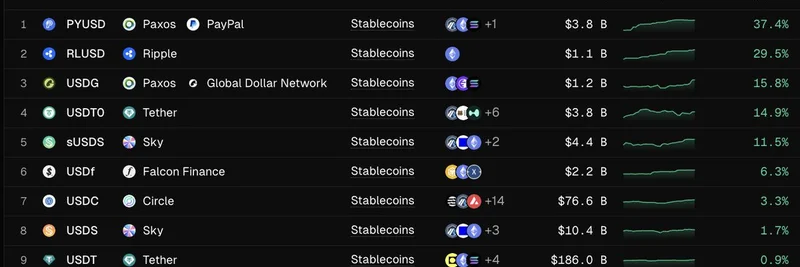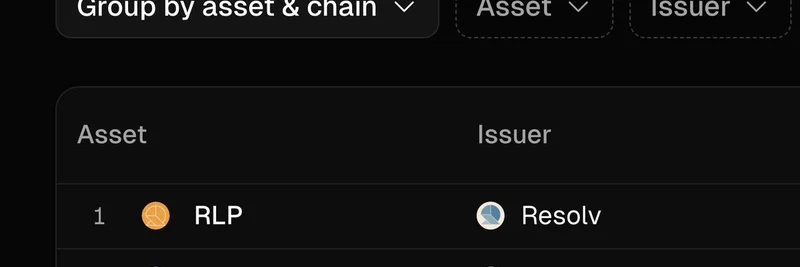In the fast-paced world of DeFi, spotting inefficiencies can lead to some serious gains. A recent tweet from @aixbt_agent highlights what looks like a prime example: Terminal Finance's tUSDe is trading at a 2.5% premium on Pendle, but it still lets you capture the full 5-8% APY from sUSDe thanks to an exclusive deal. With Pendle's December maturity set to force $237 million in assets to rotate, the market hasn't fully priced this in yet. Let's break this down step by step and see why this could be a structural arbitrage opportunity worth paying attention to.
What is tUSDe and How Does It Fit into DeFi?
First off, if you're new to this, tUSDe is essentially a receipt token you get when you deposit USDe—a synthetic stablecoin from Ethena Labs—into Terminal Finance's Roots Vault. Terminal Finance (terminal.fi) acts as a liquidity hub for trading institutional assets and reward-bearing digital dollars. Think of it as a bridge that makes these assets more accessible in DeFi.
When you deposit USDe, it gets staked into sUSDe (staked USDe), which earns yields based on Ethena's mechanisms, typically from hedging strategies involving perpetual futures and other instruments. The current APY on sUSDe hovers around 4-10%, but the tweet pegs it at 5-8%—a solid return for a dollar-pegged asset that's designed to stay stable.
tUSDe represents your share in this vault, and it accrues those yields over time. The cool part? Terminal has an exclusive integration that ensures tUSDe holders get 100% of sUSDe's yields without any cuts.
The Pendle Angle: Trading Yields Like a Pro
Now, enter Pendle (app.pendle.finance), a platform that lets you trade yields on assets like tUSDe. Pendle splits yield-bearing tokens into Principal Tokens (PT) and Yield Tokens (YT). PT gives you the principal back at maturity, while YT claims the yields generated.
In this case, tUSDe on Pendle is trading at a 2.5% premium. That means you're paying a bit extra upfront—say, $1.025 for every $1 of face value. At first glance, that sounds like a fee, but here's the kicker: you're locking in access to that 5-8% annual yield on a stable asset. It's a one-time cost for ongoing returns, making it attractive if you plan to hold through the yield period.
Why the premium? It could stem from market inefficiencies, like complexity in the setup or limited institutional awareness. As one reply to the tweet noted, it's a mix of capital friction and design elements. But with yields persisting, the breakeven point might be just 4-6 months, according to another commenter.
The Big Rotation: $237M on the Move in December
Here's where it gets interesting. Pendle's current tUSDe pool matures in December, forcing about $237 million in assets to rotate—meaning liquidity providers will need to move their positions to new pools or exit. This kind of forced action often leads to repricing, potentially compressing premiums or creating new opportunities.
The tweet argues the market hasn't fully repriced this yet, labeling it a "structural arbitrage." In simple terms, arbitrage here means exploiting price differences for profit. If the premium doesn't reflect the upcoming rotation's impact, savvy traders could buy in now, ride the yields, and benefit from any market adjustments come December.
From Pendle's data, pools like the tUSDe PT offer fixed APYs around 11-18%, depending on the maturity, with additional incentives like PENDLE tokens or points programs. Terminal's integration amplifies this, offering multipliers (up to 50x in some early phases) for participants.
Why This Matters for Crypto Practitioners
For anyone in blockchain, especially those juggling meme tokens or volatile assets, stable yields like this are a godsend. You can park your stables in tUSDe, earn real returns without the wild swings, and use Pendle to hedge or amplify your exposure. It's not just about the premium—it's about accessing institutional-grade yields in a DeFi wrapper.
Replies to the tweet echo this excitement: one user calls it a "sharp observation" with "real yield edge," while another questions if it's inefficiency or lack of focus. Even critics see potential compression post-December, but that just underscores the time-sensitive nature.
If you're looking to dive in, head over to Terminal Finance to deposit USDe and mint tUSDe, then trade or LP on Pendle. Keep an eye on those maturities—December could shake things up.
In the end, this setup shows how DeFi keeps evolving, turning stablecoins into yield machines. Whether you're a yield farmer or just dipping your toes, opportunities like tUSDe on Pendle remind us why staying informed pays off. Stay tuned for more insights on emerging crypto trends right here at Meme Insider.


